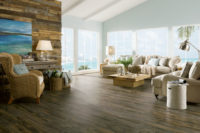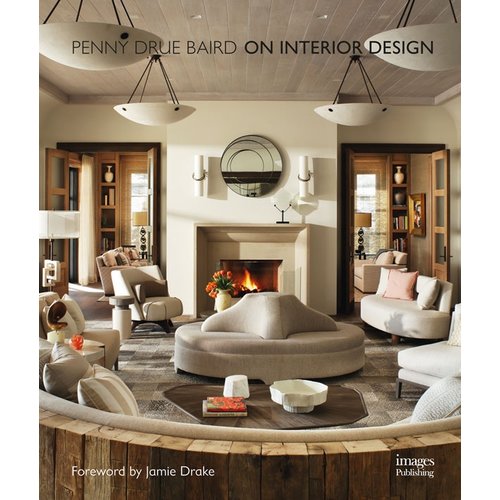Chip DeGrace: The Creative Conscience of Interface






Recently we had the opportunity to talk with DeGrace and listen to his take on design; what it takes to succeed and standout in a competitive landscape; how company culture influences innovation, and what the future holds for Interface and the industry at large.
Floor Trends: You’ve been tapped as what the company is calling the “creative conscience” of Interface. What exactly does that mean?
Chip DeGrace: It pretty much starts with the kind of company we are. Everything about Interface is about design and innovation in its broadest possible definition; that’s the kind of group they are, and always have been.
What attracted me to the company originally – my background is commercial interior design – was that it oozes that kind of energy, whether it’s about product, changing the customer experience, changing the supply chain, sustainability; you get the same kind of creative energy from the bulk of the associates. I joined the company in 1990, and it was different then than when it started in 1973, and it’s different now than when I started, but at the core it’s the same creative organization.
Not every discipline in an industry such as ours thinks of themselves as designers, so I try to remind people that whether they’re on the shop floor, out selling to customers, in the marketing department, that we’re all designers, we’re all trying to create a great customer experience. We make carpet tile, but we’re selling design. So connecting some of those dots maybe is where the “conscience” comes in, letting people know where the connection points are and getting people to understand the kind of company they’re working for, whether they’re aware of it or not.
FT: How does the concept of biophilic design fit into the Interface approach? It was front and center at the company’s booth at Greenbuild 2012.
CD: Biophilic design has been around since the mid 90s. It’s one of those subjects that’s difficult to wrestle with, especially when it comes to industrial enterprises. Though still abstract, I think it’s something a lot of industry people are beginning to understand, I think it’s something that designers and architects are beginning to incorporate into building space and programming space.
We are certainly not the experts. We’ve been hanging out with people like Janine Benyus for some time, quietly trying to understand how to bring the underpinnings of both biomimicry and biophilia into how we think about our own business, and how we can provide products that can bring that to other people’s businesses. Biophilic influence is more about trying to understand how nature can influence us, and how we can build product that can bring those sorts of influences – be it interactivity, change, the feeling of being outdoors, themes are sometimes difficult to build into a square – to the extent that we have all interpreted it, and also allow those who work with our products and design with our products to understand how our system of squares can support that as they build space for people.
FT: Let’s talk about process. There is seemingly a constraint in that the end product is a square, but it would seem that, for lack of a better term, that in the design process the square is irrelevant.
CD: It is. There’s a famous quote by Eames along the lines of “without constraint, you don’t really have design.” We’re cool with the fact that the square is what we sell, and we use that to – no pun intended – frame up most of the issues. Most of the product that Interface produces, at least in the Americas, is by David Oakey Designs, who is the best in the business in understanding trend, understanding what machines can do, understanding broader sustainability issues. He works very closely with the Interface teaming in framing all the options up and understanding what’s out there, picking the best ones and getting them into our offerings so our customers can participate.
We sell into many segments in the U.S., and not everything is “fancy,” but it’s hitting a specific target. We have very strict criteria on what we do and what we don’t do, and those constraints, just like the square is a constraint, helps us focus and helps us create really great responses to what are sometimes very restrictive requirements.
So there is some part of the process that has some very specific targets to hit, and at the far end of the continuum we listen to the market, to what designers and architects are doing and what they want, and sometimes…we’re pretty good at just dreaming up new things because we’re good at it and we understand our medium.
FT: As markets continue to open up and as more conversations are being had, there seems to be a much more collaborative partnership between designer and manufacturer as opposed to what was previously a much more hierarchal, compartmentalized approach. What trends and directions do you see design taking 5, 10 years down the road?
CD: There was a point where manufacturers would just put something out there and people would buy it, so there wasn’t a lot of interaction between the consumer and the manufacturer. Generally speaking, I think at some level, across global markets, that people expect customized solutions, and there’s an immediacy and a specificity.
When you look at commercial office space in the U.S., there was a day when it was very monolithic. You had a lot of cubicles, there was a lot of the same thing, the same planning, the same modules. Today, businesses want a lot of customization, and designers and architects demand that too. They don’t want one-solution-fits-all because their customers are becoming more eclectic and more trying to respond to a workforce that expects specificity and personalization.
For a modular manufacturer, globally, that’s a great thing; we see that as nothing but opportunity. It builds complexity: you’re not just making one brown carpet tile and selling it to everyone. You’re making many more, you’re making them in shorter, smaller quantities with faster delivery times. It demands from us, on the manufacturing side, that we get much better, much faster, much nimbler and be able to supply our customers with customized solutions regardless of the segment.
Again, we make tile, but we’re selling design to give designers and architects the ability to work with the system without making it too complex, to give installers the ability to put down six different styles and make it easy for them. That trend is big, it’s not going to end.
The other big thing is that customers now expect that the companies they are doing business with are doing the right thing, somebody you like, somebody you respect, somebody who is transparent because, all things being equal, it’s a competitive market and there are plenty of places to buy carpet tile. We’re pushing hard for 100 percent recycled content in our products; we’re not there yet, but it will be soon. Again, that’s not the end-all, but it puts pressure on the system; 100 percent sounds better than 80 percent, and we want to make certain our suppliers know that we’re shooting high, and we want them to come with us.
That’s just one example. No one will know the difference in as far as performance goes, but at the same time we’ve changed the system, we’ve changed the way supply works. That’s a trend that consumers, A&D, end-use customers, when they see that someone can do it, they start to demand it.
Looking for a reprint of this article?
From high-res PDFs to custom plaques, order your copy today!









.jpg?t=1690771780)


